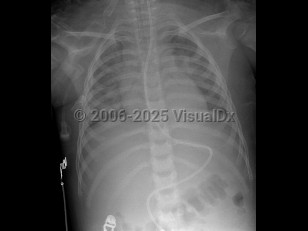Potentially life-threatening emergency
Smoke inhalation in Adult
Alerts and Notices
Important News & Links
Synopsis

The most common cause of death in fires is not thermal injury but rather the inhalation of noxious gases. Smoke is made of carbon dioxide, water vapor, carbon monoxide, fine particulate matter, hydrocarbons and other organics, and a variety of other substances. There may be many other toxic substances present in the smoke that increase when certain hazardous materials are burned, such as pressure-treated wood that may contain arsenic or chromate, insulation (including asbestos and fibrous materials), lead paint, particle board, asphalt (in roofing materials), used tires, rubber, plastics, vinyl materials, and foam padding (in mattresses and furniture).
Smoke inhalation can lead to many complications from irritation of the eyes and respiratory tract to acute and chronic lung disorders. The potential health problems will depend on what is being burned, concentrations of toxic substances in the smoke, the length of the exposure, and individual susceptibility (which will vary depending on the health of the individual and any medical problems they may have). The elderly, those with preexisting heart or lung conditions, smokers, and young children may be affected more severely by smoke inhalation.
Carbon monoxide (CO) poisoning frequently results from smoke inhalation. The acute presentation includes headache, dizziness, or nausea. Infants may present with vomiting. In patients with prolonged exposure, coma or seizures can occur, as well as altered mental status, retinal hemorrhages, lactic acidosis, and myonecrosis. Myocardial infarction may occur in the elderly, especially those with heart disease. Cherry-red skin color is associated with CO poisoning (2%-3%).
Smoke inhalation can lead to many complications from irritation of the eyes and respiratory tract to acute and chronic lung disorders. The potential health problems will depend on what is being burned, concentrations of toxic substances in the smoke, the length of the exposure, and individual susceptibility (which will vary depending on the health of the individual and any medical problems they may have). The elderly, those with preexisting heart or lung conditions, smokers, and young children may be affected more severely by smoke inhalation.
Carbon monoxide (CO) poisoning frequently results from smoke inhalation. The acute presentation includes headache, dizziness, or nausea. Infants may present with vomiting. In patients with prolonged exposure, coma or seizures can occur, as well as altered mental status, retinal hemorrhages, lactic acidosis, and myonecrosis. Myocardial infarction may occur in the elderly, especially those with heart disease. Cherry-red skin color is associated with CO poisoning (2%-3%).
Codes
ICD10CM:
T59.811A – Toxic effect of smoke, accidental, initial encounter
SNOMEDCT:
426936004 – Smoke inhalation injury
T59.811A – Toxic effect of smoke, accidental, initial encounter
SNOMEDCT:
426936004 – Smoke inhalation injury
Look For
Subscription Required
Diagnostic Pearls
Subscription Required
Differential Diagnosis & Pitfalls

To perform a comparison, select diagnoses from the classic differential
Subscription Required
Best Tests
Subscription Required
Management Pearls
Subscription Required
Therapy
Subscription Required
References
Subscription Required
Last Updated:04/01/2020
Potentially life-threatening emergency
Smoke inhalation in Adult

